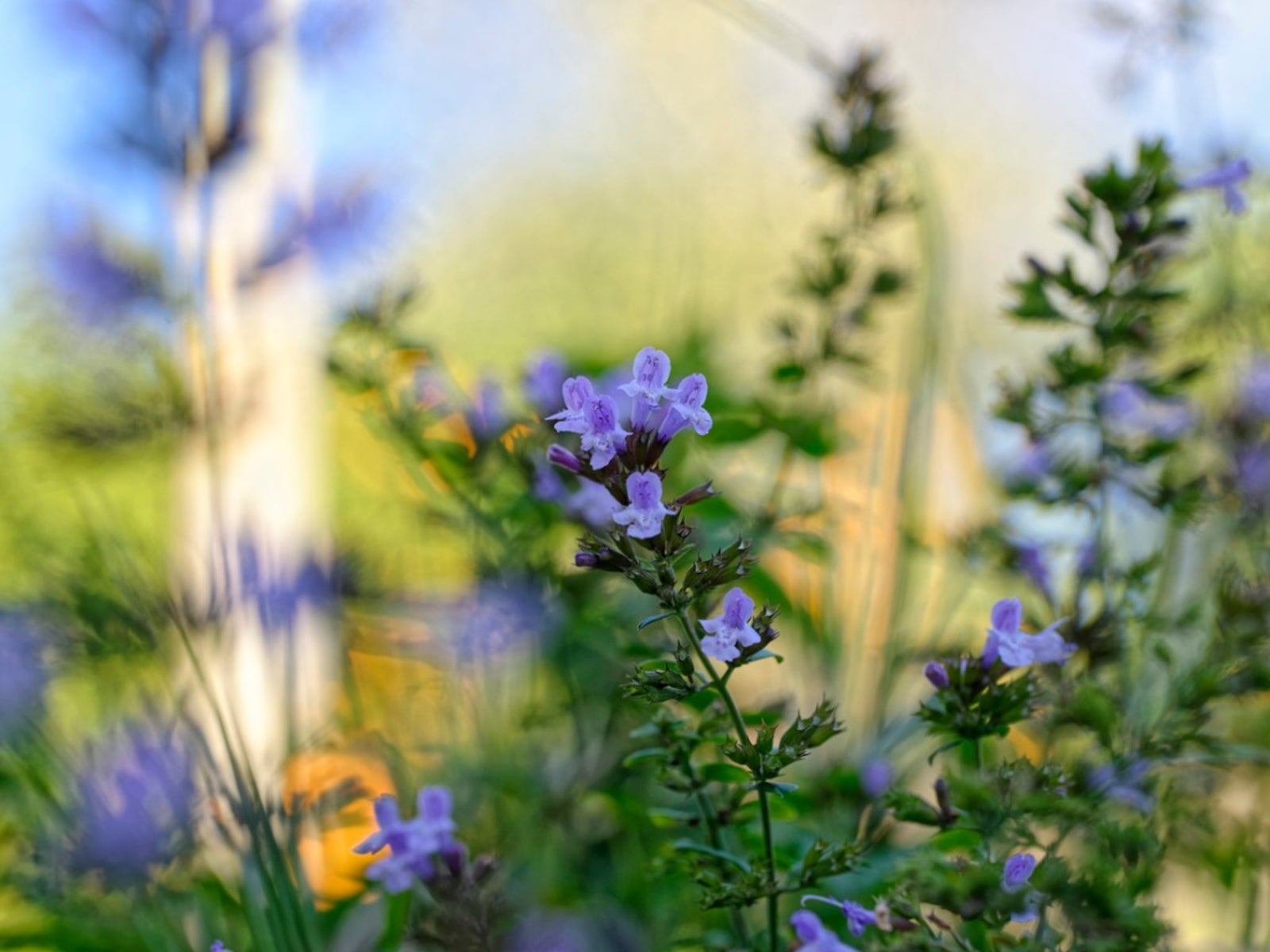Lesser Calamint Plants: Growing Calamint Herbs In The Garden


Herbs enliven the garden and accent it with a richness of texture, unique scents, and properties. Calamint (Calamintha nepeta) is a native herb to the UK with a host of potential medicinal uses and a lovely flower display and intense leaf texture. The herb thrives in organic to sandy soils and releases a strong camphor scent when the leaves are crushed. You may wonder, “Can I grow calamint?” The plant is hardy in USDA plant hardiness zones 5 to 9 and is an easy to grow and care for herb.
About Calamint Plants
Calamint plants are thick stemmed, bushy herbs that spread from rhizomes like most mint plants. The leaves are heavily veined and highly textured, many sporting ridges and most with hairy or fuzzy foliage. Some types of calamint may be 4 to 24 inches (10-61 cm.) tall and bloom in mid to late summer with some varieties flowering in fall. Flowers are two-lipped slender tubes in hues that range from purple to red and into white and cream. The plant can self-sow but its more invasive qualities are found from the ranging stems and rhizomes, which root at internodes and can create new plants.
Types of Calamint
Calamint is a member of the Labiatae family and includes all types of mints. This group of herbs is vast and includes a variety of cultivars and specimens. There is a grandiflora variety with larger fuzzy veined leaves and lavender tubular flowers. The scent is amazing, with a burst of minty-tangerine freshness. Among the lesser calamint is a variety with a grapefruit-mint scent and many other pungent aromas. The diminutive Ozark calamint is only 6 inches (15 cm.) tall with vibrant red flowers in late spring. Other varieties sport imaginative names such as wild basil, monkey flower, mountain thyme, and limestone savory. The smallest of the lesser calamint is a 4 inch (10 cm.) tall trailing variety with pink to mauve blooms.
Growing Calamint Herbs
Place calamint plants in full sun where soils drain well. Container gardening is a good way to keep the herbs from spreading. They also make excellent border plants but some maintenance is necessary to keep the plant from invading other areas. The potager garden is also a prime spot for growing calamint herbs. There you can easily access the leaves and stems for a host of useful purposes. Calamint has few pest or disease problems but you need to be vigilant for small insect pests such as whitefly. Treat with a horticultural soap or blasts of fresh water to rinse off the insects.
How to Use Calamint
This has long been a medicinal herb with uses ranging from topical to endemic. The high menthol content of the leaves makes it a perfect poultice for bruises and contusions, as well as a rub for bronchial issues. It is not wise to handle or use the herb if you are pregnant. How to use calamint in seasoning though? Traditionally, the herb has been used to flavor meats, but the variety dictates the flavor profile. Some more closely resemble thyme, while others are similar to zingy basil. Calamint plants are attractive to butterflies and bees and dry well as an addition to potpourri. Dry the leaves for a refreshing hot or cold tea. This versatile plant will become one of your favorites for its carefree nature, beauty, and usefulness.
Gardening tips, videos, info and more delivered right to your inbox!
Sign up for the Gardening Know How newsletter today and receive a free copy of our e-book "How to Grow Delicious Tomatoes".

Bonnie Grant is a professional landscaper with a Certification in Urban Gardening. She has been gardening and writing for 15 years. A former professional chef, she has a passion for edible landscaping.
-
 Looking For Plants To Give You The Soft And Fuzzies? Try These 5 Fuzzy Leaf Plant Options
Looking For Plants To Give You The Soft And Fuzzies? Try These 5 Fuzzy Leaf Plant OptionsLovers of texture, drama, silver foliage and tactile plants will adore these special sensory garden additions. These fuzzy leaf plant options will leave you all aglow
By Susan Albert
-
 Get Ready For A Summer Of Hummers! Grow These Full Sun Hummingbird Plants and Flowers
Get Ready For A Summer Of Hummers! Grow These Full Sun Hummingbird Plants and FlowersIf you’re lucky enough to enjoy a sunny backyard, make sure you are maxing out on your pollinator opportunities and grow these full sun hummingbird plants and flowers
By Tonya Barnett